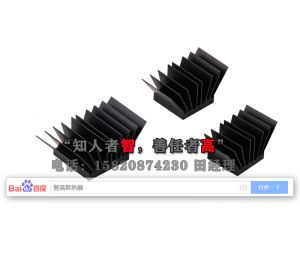
Aluminum heat sink is also called aluminum heat sink. Aluminum heat sink has the characteristics of beautiful appearance, light weight, good heat dissipation performance, and good energy saving effect. The surface of the processed aluminum profile of the heat sink is anodized for surface treatment to increase the corrosion resistance, wear resistance and appearance of the aluminum.
The molds of aluminum heat sinks are made of many slender teeth, which have to withstand a large extrusion force. Each tooth must have high strength and toughness. If there is a big difference in performance between them, it is easy The teeth with poor strength or toughness are broken. Therefore, the quality of mold steel must be reliable. It is best to use H13 steel produced by a reliable manufacturer or use high-quality imported steel. The heat treatment of the mold is very important. It should be quenched by vacuum heating. It is best to use high-pressure pure nitrogen quenching to ensure the uniform performance of all parts of the mold after quenching. After quenching, three times of tempering are required to ensure that the hardness of the mold is under the premise of HRC48-52 and has sufficient toughness. This is an important condition to prevent the mold from breaking teeth.

For aluminum heat sinks to be successfully extruded, the key is that the mold design must be reasonable and the manufacturing must be accurate. Generally try to avoid direct extrusion of the ingot onto the die belt. For the flat and wide comb-shaped radiator profile, design a diversion die with a smaller middle and larger sides to make the metal flow to both sides, reduce the extrusion force on the die working belt, and make the pressure distribution uniform.
Since the wall thickness difference of the section of the radiator profile is large, the difference should be maintained when designing the mold working belt. That is, the working belt should be particularly enlarged where the wall thickness is large, which can be as large as 20mm~30mm, and the position of the tooth tip should be broken. Routine, minimize the work. In short, we must ensure the uniformity of metal flow everywhere. For flat and wide radiators, in order to ensure a certain rigidity of the mold, the thickness of the mold should be appropriately increased. The thickness increase is about 30% to 60%. The production of the mold should also be very fine. The empty knife should be symmetrical up and down, left and right, and the middle. The machining error between the teeth should be less than 0.05mm. The large machining error is likely to produce eccentric teeth, that is, the thickness of the heat sink is uneven. The phenomenon of broken teeth may even occur.

For sections with more mature designs, inlay alloy steel molds are also a better method, because alloy steel molds have better rigidity and wear resistance, and are not easily deformed, which is beneficial to the formation of aluminum profiles for heat sinks.
Dongguan Zhigao Industrial Co., Ltd. specializes in processing automotive power amplifier radiators, home audio panels, electronic profile radiators and LED radiators, as well as CNC processing.